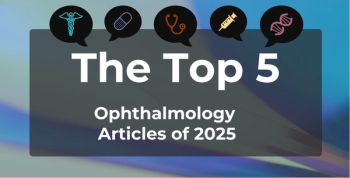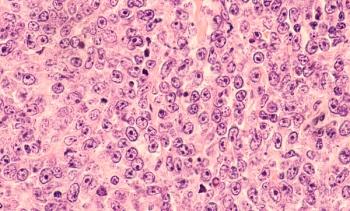
ICS Use Not Associated With Risk of Pneumonia Hospitalization Among Children With Asthma
These findings support the safe use of inhaled corticosteroids (ICS) regarding the risk of pneumonia among children with asthma, according to one study.
A recent study investigating the potential adverse effects of inhaled corticosteroid (ICS) use in children with
This Swedish nationwide cohort study is published in
“The results were in accordance with results of previous RCTs [randomized control trials] on children, but not aligned with the previous observational data, which mainly included adults,” the researchers of the study wrote. “To our knowledge, this is the first large study that provides pediatric-specific evidence on the potential association between ICS use and the risk of hospitalization for pneumonia.”
While ICS is considered generally safe, clinical studies have suggested that it may increase the risk of pneumonia in adults with chronic obstructive pulmonary disease (COPD). Furthermore, evidence is limited regarding safety for children with asthma. In this study, the researchers aimed to assess the potential association between ICS use and the risk of hospitalization for pneumonia in a pediatric asthma population.
The study included data from multiple Swedish national registers from January 1, 2007, to November 30, 2021, consisting of children aged 2 to 17 years with a confirmed asthma diagnosis before or during the study period. Mutually exclusive episodes of new ICS use and no use were identified during the study period using the Swedish Prescribed Drug Register, which contains information on all dispensed prescription medication for all individuals living in Sweden.
Eligible ICS and no-use episodes were preceded by 18 months of no ICS dispensing. No-use episodes had to have at least 1 dispensing of another respiratory medication in the past 12 months to verify that patients were currently or recently treated during comparator episodes. Because of this, one patient could have multiple ICS and no-use episodes during the study period. Therefore, episodes did not overlap, and each outcome event was only accounted for once.
Additionally, the researchers adjusted for potential confounders with propensity score overlap weighting, and the risk of hospitalization with pneumonia as a primary diagnosis was estimated.
A total of 425,965 children with asthma were identified, of which 249,351 had ICS use and 214,840 had no ICS use episodes.
After exclusion, the researchers observed 369 incident hospitalizations for pneumonia in the ICS group and 181 incident hospitalizations for pneumonia in the no-use group, respectively. The weighted incidence rates of hospitalization for pneumonia were 14.5 per 10,000 patient-years for ICS use episodes and 14.6 per 10,000 patient-years for no-use episodes. Furthermore, the weighted hazard ratio (HR) for hospitalization for pneumonia associated with ICS was 1.06 (95% CI, 0.88-1.28) and the absolute rate difference was −0.06 (95% CI, −2.83 to 2.72) events per 10,000 patient-years, compared with patients with no ICS use.
However, the researchers acknowledged some limitations to the study. First, the researchers excluded very young children under the age of 2 years, because of difficulties distinguishing asthma from obstructive bronchitis or viral-induced wheeze. Second, the researchers believed the potential unmeasured confounding in the primary analysis may have resulted in bias, in which unmeasured risk factors would be more prevalent in the ICS episodes compared with the no-use episodes. Other outcomes and exposure misclassification were other potential biases.
“One subgroup analysis that we thought about that we couldn't do was looking at different dosages to see how that could have an impact,” lead researcher Karl-Hermann Sielinou Kamgang, PhD candidate, Department of Medicine, Department of Medical Epidemiology and Biostatistics, Karolinska Institute, Solna, Sweden, said to The American Journal of Managed Care®. “But due to the data that we have, we couldn't really do a dose analysis. Just in general, there is really an increased need for pediatric evidence, not just for asthma, but for a bunch of other conditions."
Despite these limitations, the researchers believe the study supports the safety of ICS use for managing asthma in a pediatric population.
Reference
Sielinou Kamgang K, Rhedin SA, Almqvist C, et al. Use of inhaled corticosteroids and the risk of hospitalization for pneumonia in children with asthma: a nationwide cohort study. Thorax. Published Online January 6, 2024. doi: 10.1136/thorax-2023-220742
Newsletter
Stay ahead of policy, cost, and value—subscribe to AJMC for expert insights at the intersection of clinical care and health economics.







































